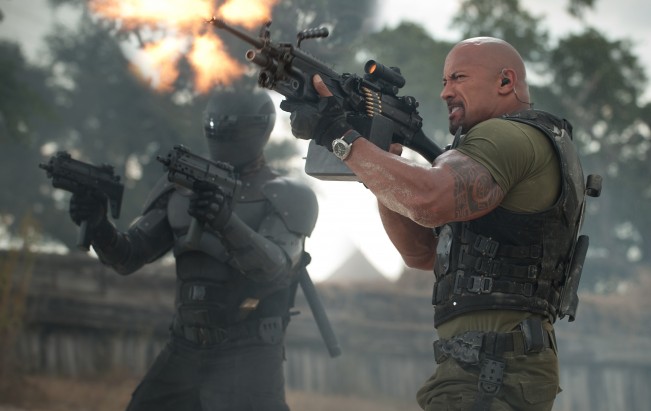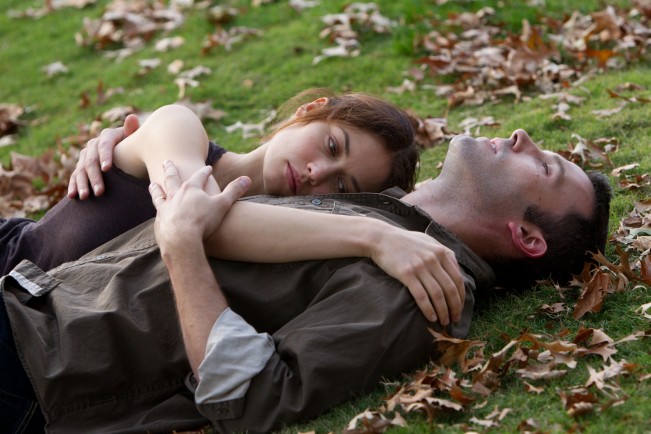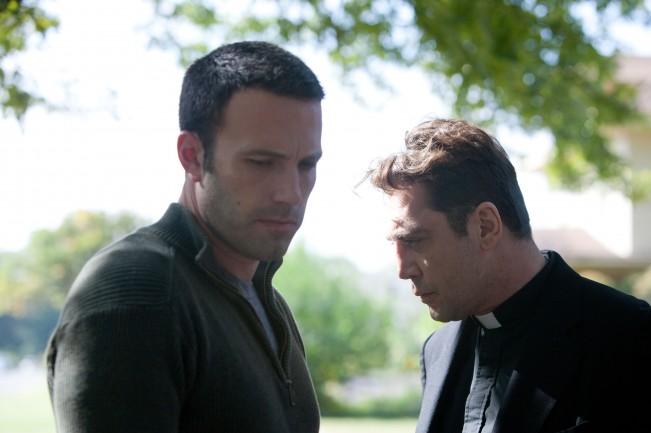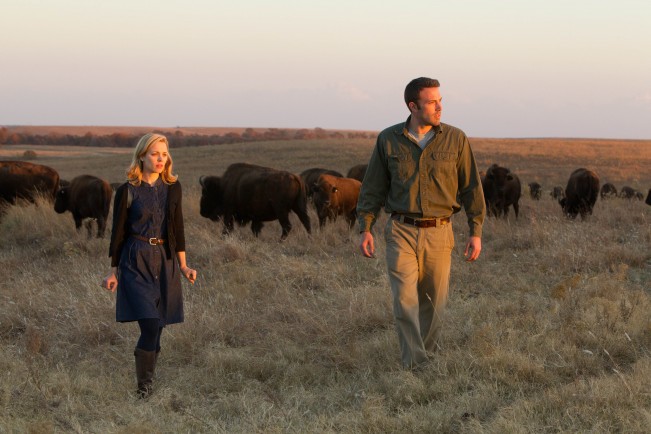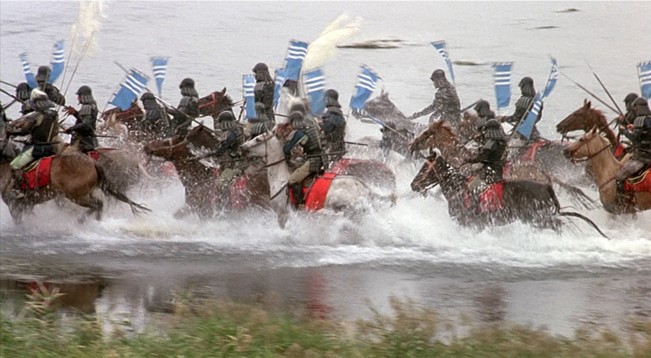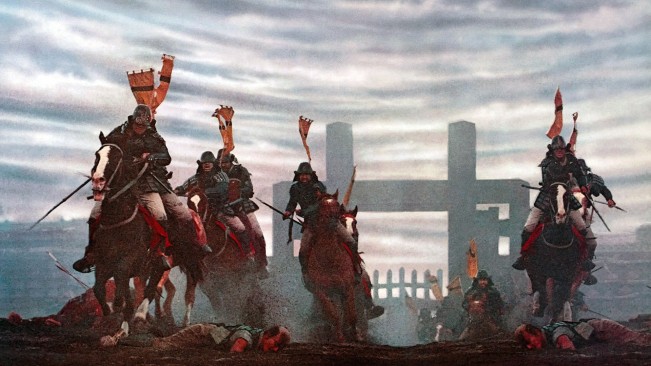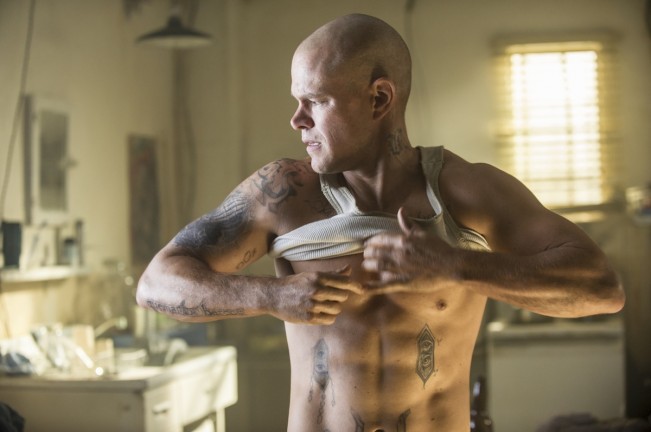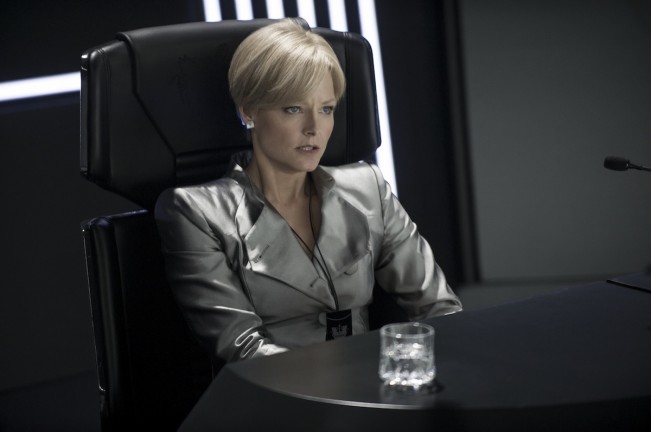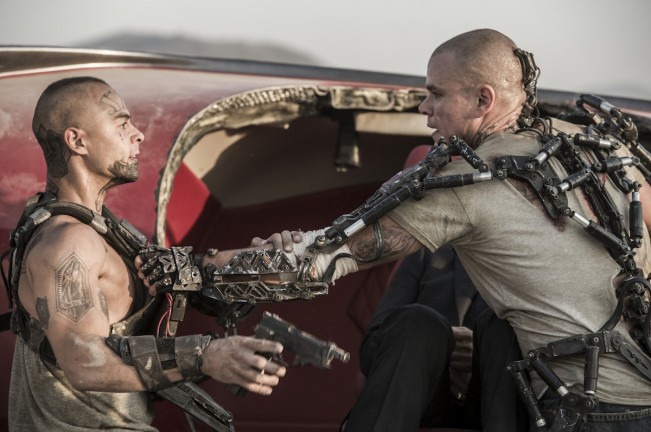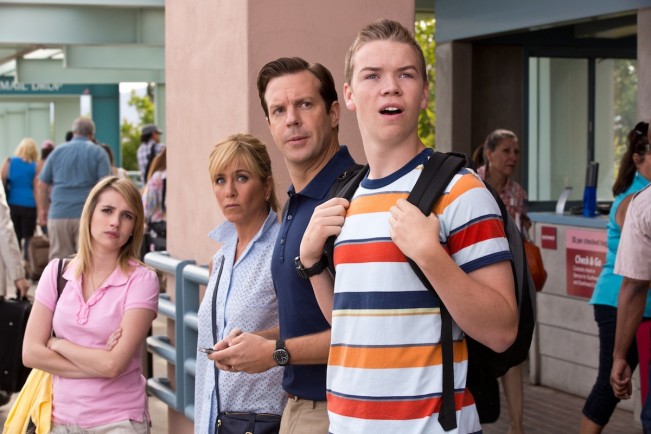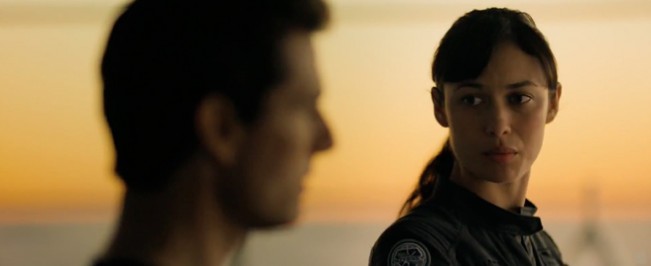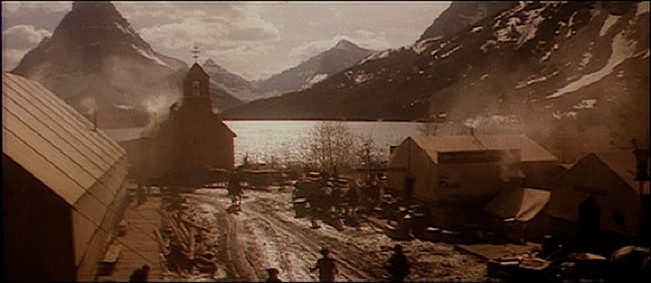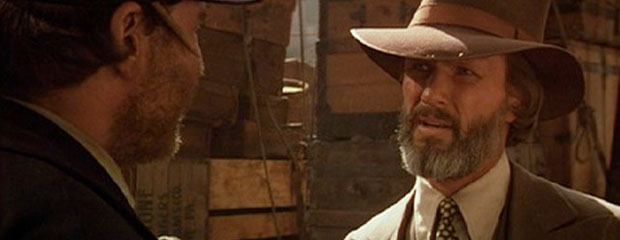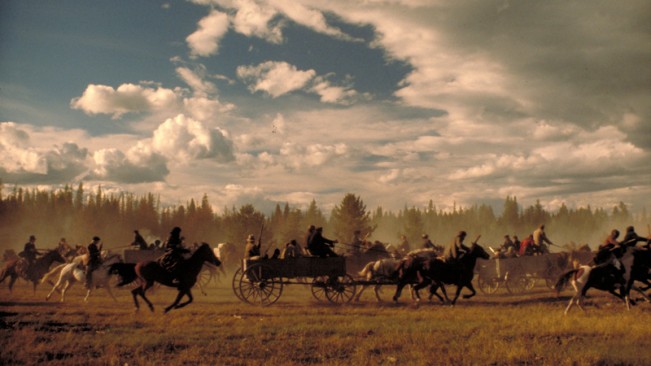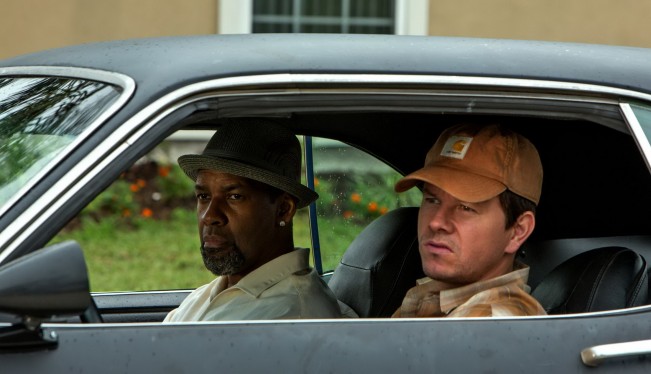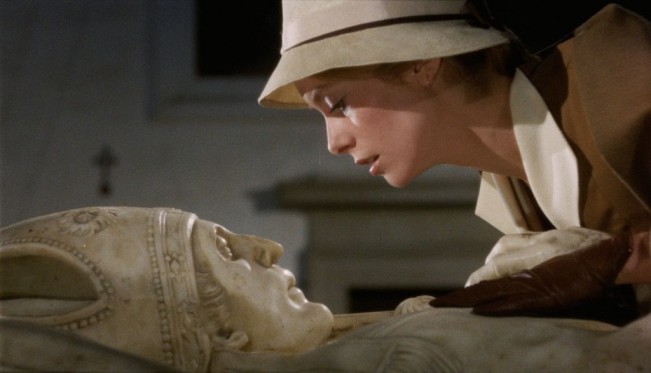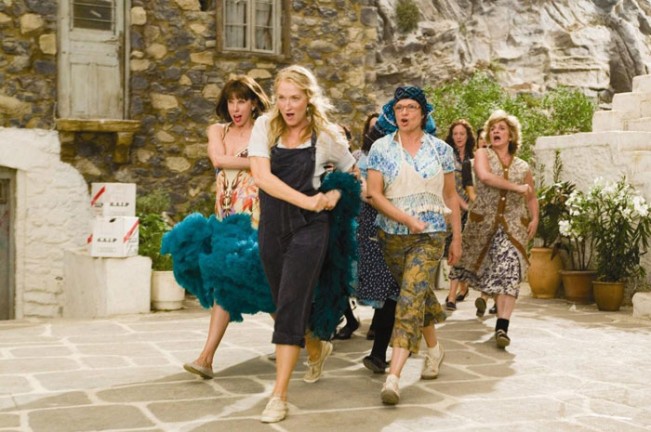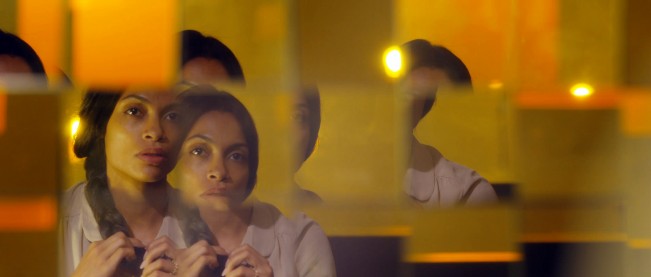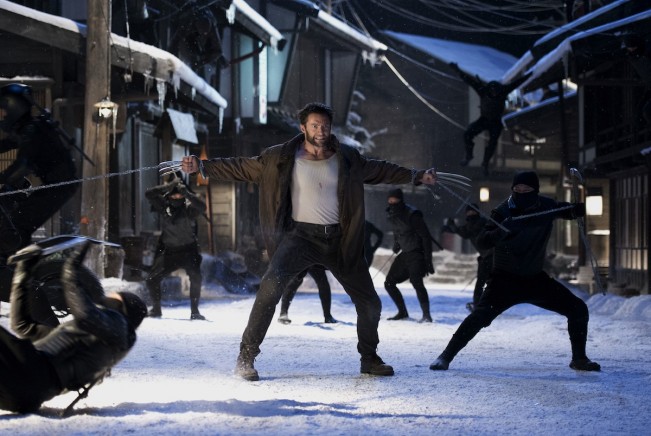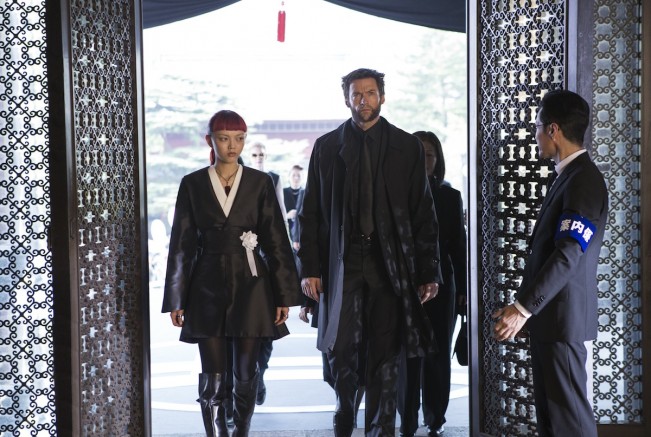CO-PICK OF THE WEEK: NEW
WORLD WAR Z (Three Stars)
U. S.: Marc Forster, 2013 (Paramount)
World War Z is a damned fast movie—and it‘s probably got the biggest collection of ravenous zombies ever appearing together anywhere, anyhow. Assembled with panache by producer-star Brad Pitt, by director Marc Forster, and by writers Matthew Michael Carnahan, Drew Goddard and Damon Lindelof, this wildly expensive and sometimes insanely exciting horror thriller is about a worldwide epidemic of the living dead, and the one man on Earth who can apparently, maybe (we hope) stop it: ex-U.N. troubleshooter Gerry Lane, played by Pitt. It’s something to see, if not something to think (much) about, or to see again.
This movie moves like one of the dozens, no, hundreds, no, millions of rampaging ghouls who have suddenly declared war on humanity (or, as they like to call us, Lunch). Both the zombies and the movie come at us with the unstoppable push and fury of undead gangbangers or accountants. These zombies move in a series of crazy skittering, lurching leaps that seem to cover miles of ground and plot in minutes, no seconds, no microseconds—taking over airplanes, hospitals, cities, countries, banging their heads on our car windows, threatening our adorable families, or Gerry’s adorable family (sweet mom Karen played by Mireille Enos, and sweet-pea daughters Sterling Jenns and Abigail Hargrove)—and killing or infecting or eating people with undead gusto and hideous relish and zip.
Zip! We’re in Philadelphia, having an adorable family breakfast. Then zip! suddenly (almost everything in this movie is sudden) we’re in a City of Unbrotherly Hunger besieged by walking corpses running amok! Zap! We’re bound by helicopter off a roof to a ship in the mid-Atlantic, where Gerry is separated from his family and given the hefty assignment of figuring out what’s going on, and figuring out how to stop it. Zip! We’re in South Korea, dodging corpses. Zippo! We’re in Israel for the big showpiece scene, watching a huge heap of inhuman life (or death) crawling over each other to form a massive, rising wall; Then Zappa! We’re on a plane filled with maddened monsters and shrieking humans and Gerry and an Israeili soldier survivor of the last big scene: Zegen (Daniela Kertesz). And zappa-zippy-zombie! We’re in Wales, in a zombified medical center, just in time for the film’s terror-fix-finale.
World War Z is based on a novel by Max Brooks, the son of Mel Brooks and Anne Bancroft, and reportedly Max arranged the book as an oral history of the zombie attack—sounds more original than most of the movie. That’s a movie I’d like to see one day, and it also sounds like a film that Marc Forster (the one who made Monster’s Ball and The Kite Runner) might like to make.
Not that I didn’t enjoy at least some of this one. It’s mostly well-written, well cast, well-directed, and genuinely scary at times—though not especially inspiring or ingenious. But the producer was there when they needed him. A lot of the film’s quality, or at least its sometimes entertaining excess, is probably due to producer-star Brad Pitt, for whom this disaster epic was obviously a labor of zombie-love, as much as of zombie-commerce. Pitt is one actor whose good looks you tend not to hold against him. He’s a guy who, like Paul Newman and Robert Redford (two fathers of some of his performances) kids himself enough to remove what might be a taint of narcissism. Pitt doesn’t usually take the Tom Cruise stud-hero route; he’s done a lot of interesting projects. And though he’s wearing a strange hairdo for this type of role, he makes for a likable hero, if not a plausibly written one.
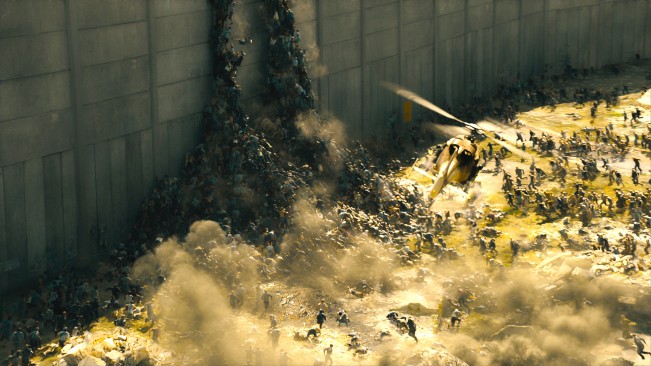 Why is Gerry Lane undertaking this vast mission mostly by himself? (The movie is a classic star vehicle but maybe it would have been better to have two heroes: one official, and one, the Pitt part, more of a freelancer.) Why is Gerry able to survive one horrendous action scene after another? Why do riots and screamfests break out wherever he goes—besides the fact that he’s a movie star, something producer Pitt exploits continuously? Why don’t the Israeli defenders notice that writhing heap of zombies scaling their wall, or react to it until it’s too late?
Why is Gerry Lane undertaking this vast mission mostly by himself? (The movie is a classic star vehicle but maybe it would have been better to have two heroes: one official, and one, the Pitt part, more of a freelancer.) Why is Gerry able to survive one horrendous action scene after another? Why do riots and screamfests break out wherever he goes—besides the fact that he’s a movie star, something producer Pitt exploits continuously? Why don’t the Israeli defenders notice that writhing heap of zombies scaling their wall, or react to it until it’s too late?
Most of all, why did they spend so much money on this? I saw a big chunk of the original 1968 Night of the Living Dead on TV a short while before catching World War Z—and I was amazed again at how much George Romero accomplished with such scant-seeming resources. World War Z, by contrast, is almost top-heavy with spectacle and action, almost gorged with blood and guts. Occasionally that pays off, as in the Tower of Zombies scene in Jerusalem. But like most big movies, especially big horror movies, it could use more character, more dialogue, more ideas, more personality. And maybe one or two or three hundred, no, three thousand, less zombies.
Extras: None.
CO-PICK OF THE WEEK: NEW
THE BLING RING (Three Stars)
U.S.: Sofia Coppola, 2013 (Lionsgate)
OmiGod!
That’s the most frequently exclaimed exclamation in Sofia Coppola’s The Bling Ring—I’ll bet I heard it in the movie at least a hundred times—and the phrase fits this picture and its people like a Gucci glove or like Louboutin shoes or like a critical cliche. It‘s used constantly by the title characters, an amateur bunch of L. A.-area teenaged thieves who pull heists at celebrity homes, and it can have a slightly toxic effect. Say it a few times, and you can almost feel the brain cells seeping out of your head. OmiGod! OmiGod! OmiGod!
What the catchphrase means—”I don‘t believe it!” or “ This is amazing!“ or maybe just “Hosanna!“—may affect you less than the mock-religious quality of its incessant repetition by the Blingers. They were a gang of four wannabe-fashionista girls, and one computer geek boy from the San Fernando Valley. Based on real life kids who were the subjects of a Vanity Fair article about their crimes, they became famous for going on joy-raids into the homes of the celebrity rich of Los Angeles-and-thereabouts, and stealing their bling: that is, their jewelry, shoes, objets d’art and fancy clothes and occasionally wads of dough the owners just leave lying around the place.
These were no petty robberies, and they aren‘t in the movie either. The kids—whose targets included Lindsay Lohan, Megan Fox, Orlando Bloom, Rachel Bilson, and most famously, Paris Hilton—netted nearly three million dollars worth of loot, though they got considerably less than that from the fences. And the raids were ridiculously easy. The fictionalized gang—including ringleader Rebecca (Katie Chang), Nicki (Emma Watson), and the only guy, Marc (Israel Broussard)—simply checked up on their favorite celebs on the Internet, found when they were going out of town on some celebrity gig and then went on their “shopping“ expeditions in the empty and unprotected homes.
These are a brazen but pretty inexperienced bunch. They never broke into the houses, but always got in through open doors or windows or with keys left under the mats. And they got their booty from people who had so much stuff that some of them, like Paris Hilton, didn’t even know, at first, that anything was missing. They were caught because they were incredibly stupid. They totally ignored the surveillance cameras some of their victims had on, and they sent out Facebook pictures of themselves waving the loot. OmiGod!
Director-writer Coppola shows the Bling Ring for what they were: selfish and dopey, and she shows them with clarity and candor that mark all her films. Coppola makes American indie films that look like European films—The Virgin Suicides, Lost in Translation, Marie Antoinette and Somewhere—and this is a European-style movie as well. But it’s also one of her most American films, in theme, subject and performances. These greedy, reckless, lazy, good-looking, mostly arrogant kids, obsessed with celebrity, obsessed with looks and loot, are the faces of the American wannabe idle rich, and Paris’s swanky domicile, which didn’t seem to contain a single book, is a kind of equivalent of Gatsby’s glittering mansion, except that it’s empty, in more ways than one.
But the movie still looks and feels European. It‘s not all sharp edges, and bright light pouring down on hunks and hotties. It has that misty, dreamy, well-textured look Coppola always got from her excellent longtime cinematographer Harris Savides (who also worked for David Fincher). Savides became ill during the shooting and later died, and he was replaced by his assistant, Christopher Blauvet, who does a beautiful, inobtrusive job. Perhaps not as beautiful as Savides’, who was responsible for the film’s single most widely-discussed and praised shot, the long stationary take of Audrina Partridge’s home, at nighttime, with the Bling Ring moving from room to glass-walled room, picking up swag.
The cast is led by Katie Chang, who makes a marvelous flirty psychopath out of Rebecca, by Israel Broussard, who does a nice variation on the usual high-school movie outsider kid who improbably gets the girl (or girls), and by Emma Watson (Hermione of the Harry Potter movies) who is a little scary as the gang‘s most self-deluded outlaw Nicki. (Nicki thinks the life-lessons from this experience will serve her well when she becomes a philanthropist or world leader.)
The others in the gang, all fine, imclude Tarmissa Farmiga as Sam, and Claire Allen as Chloe—and they all, singly or together, help paint this eerie portrait of the young, the selfish, and the vacuous—the image-crazy, bling-crazy products of a youth-intoxicated culture. The best acting in the movie though, is by the actress playing one of the film’s handful of parents: Leslie Mann as Nicki’s blissfully silly mom Laurie. Laurie is as thoughtless as her daughter is acquisitive. And Mann’s big acting moment comes when she leads some of the girls in witlessly clichéd new age self-helpish prayers—when you’d think a simple chorus of “OmiGods!” would have been more appropriate.
I liked the film very much at first. The best of it seems a sharp-eyed, sometimes stunning look at the utter vacuousness and amorality of much of the more visible modern culture. But it seemed to float away afterwards, and I think it needs more acid in its system. The film presents its gang as a little juiceless and too banal. There’s little or no sex in their routines and not even much heat. The kids, except for the notable nasty and manipulative Rebecca, seem almost empty, waiting for a camera and a paparazzo to bring them some life. They are hooked on acquisition, on their addled dreams of becoming rich and famous and beautiful, or “famous for being famous.” As if to demonstrate this view, Paris Hilton appears in the film as herself and lends her digs—one of the actual crime scenes—to Sofia for the shoot. Her house looks like a set—and like the other sets impersonating the homes of Lindsay Lohan and the others.
So what’s the message? Does it need one? Is it a simple matter of getting more surveillance equipment, and maybe some guns? Me, I thought the message might be was as simple as the Biblical saying “The love of money is the root of all evil.” Isn’t that right? Isn’t that how it all really comes down? Like totally. OmiGod!





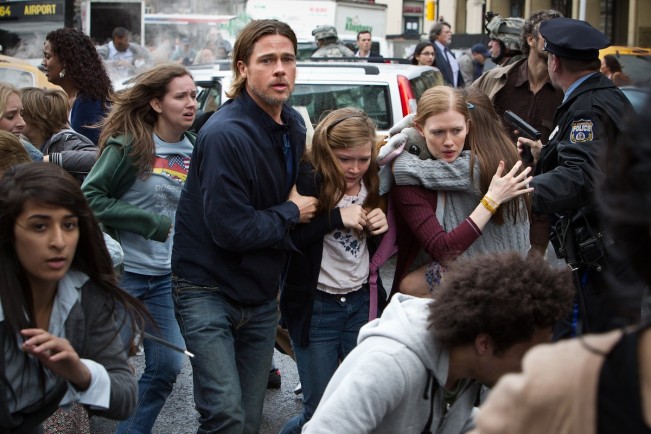
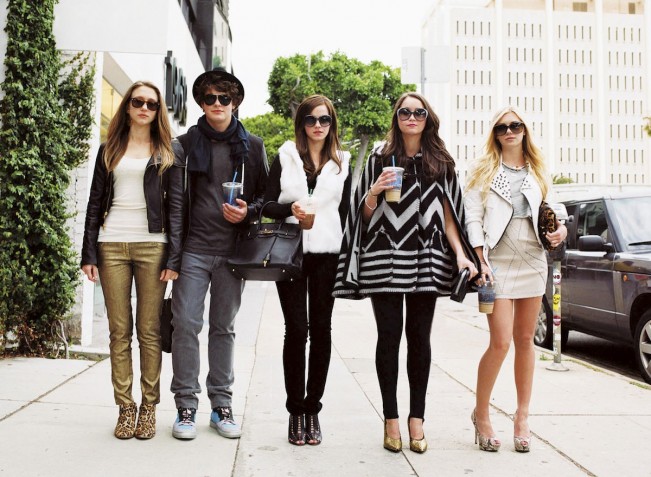
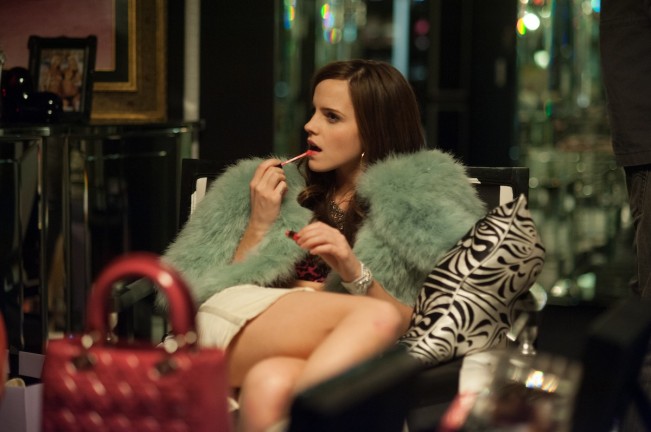
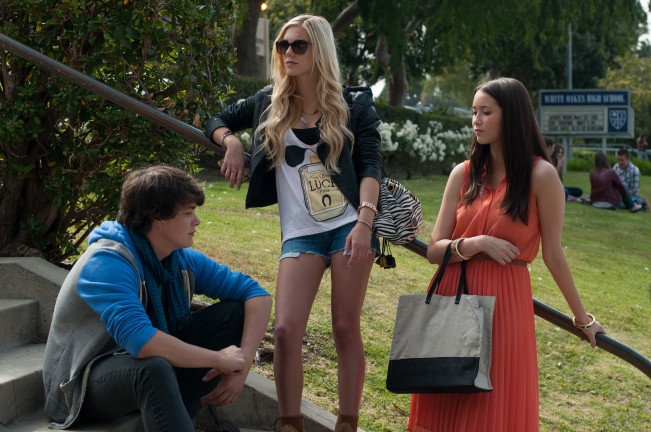
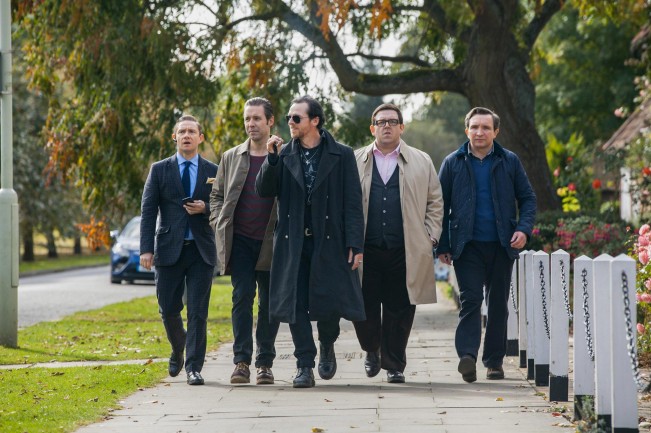
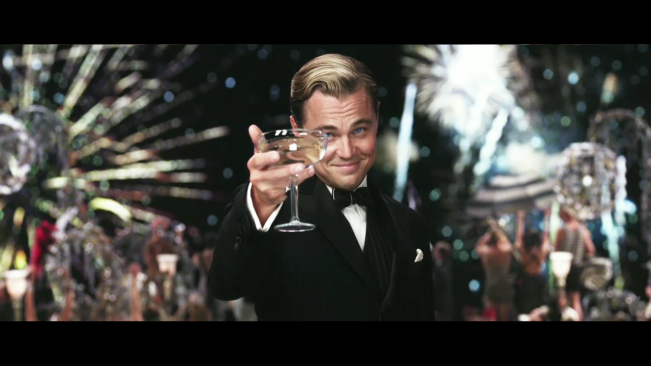
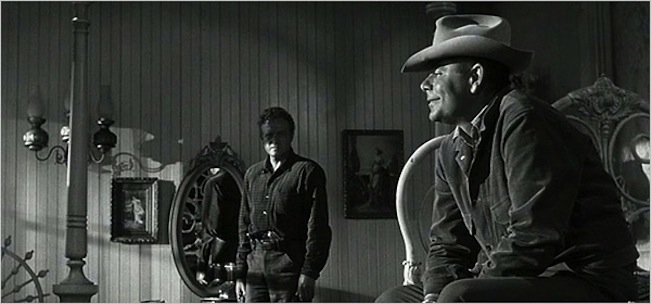
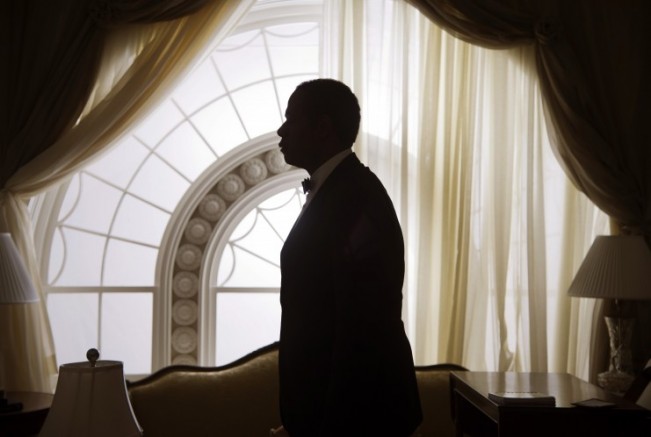
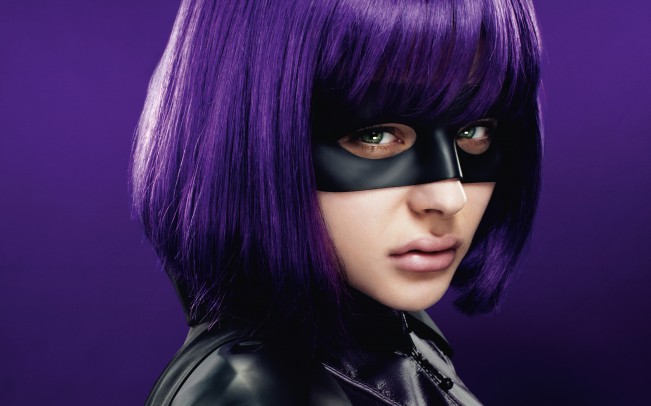
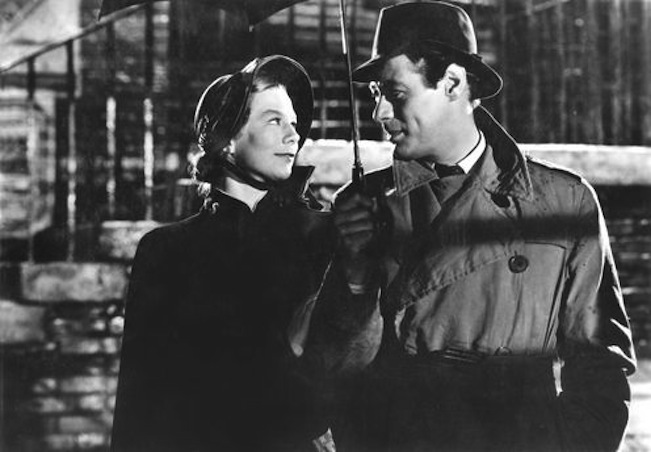 Late in life, George Bernard Shaw entrusted the film rights for o all his plays to a relatively inexperienced and threadbare thirty-something producer named Gabriel Pascal. Pascal, raised in Hungary, was an entrepreneur without money, and his only film credit up until then had been, appropriately enough for a native-born Transylvanian, a movie called “The Living Dead.” But Shaw, then in his 70s, liked Pascal. The Nobel Prize-winning writer, the most famous playwright in the world at that time, and also a socialist who could get along with capitalists (if they made him money), had nevertheless resisted most other attempts to film his plays.
Late in life, George Bernard Shaw entrusted the film rights for o all his plays to a relatively inexperienced and threadbare thirty-something producer named Gabriel Pascal. Pascal, raised in Hungary, was an entrepreneur without money, and his only film credit up until then had been, appropriately enough for a native-born Transylvanian, a movie called “The Living Dead.” But Shaw, then in his 70s, liked Pascal. The Nobel Prize-winning writer, the most famous playwright in the world at that time, and also a socialist who could get along with capitalists (if they made him money), had nevertheless resisted most other attempts to film his plays.